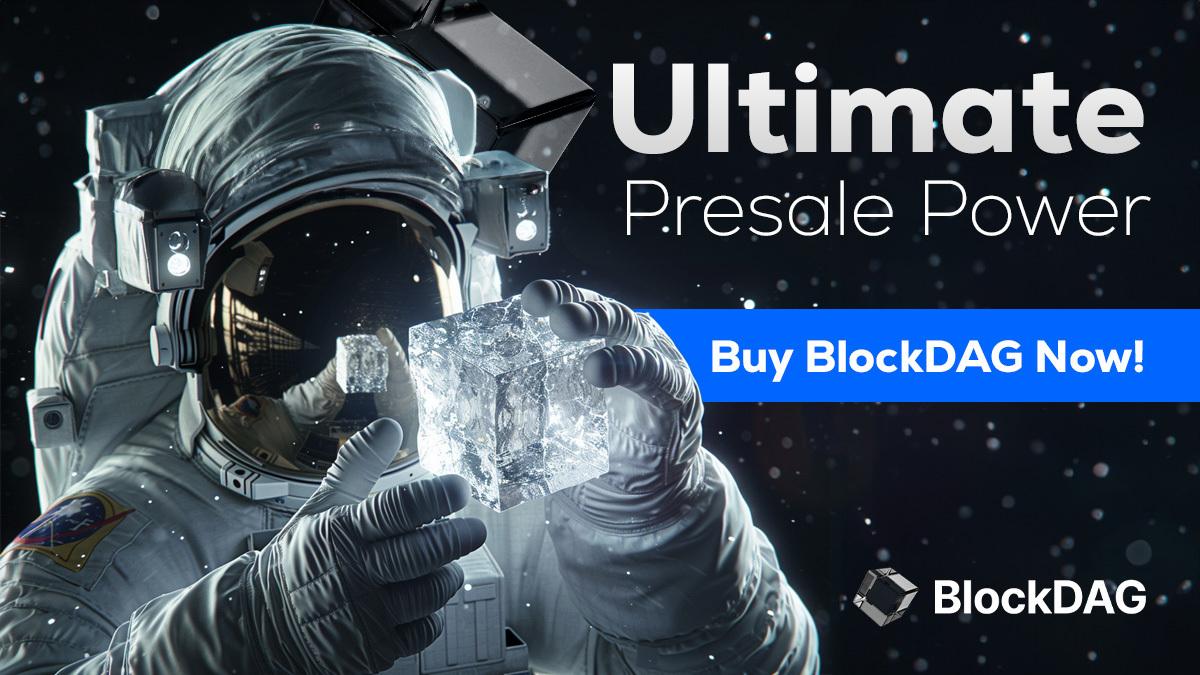BlockDAG’s Presale Nears $420M With Awakening Testnet! More on Bitcoin Hyper & Pepenode Price Trends
Many new launches talk about fresh ideas, but often fail when checked against real results. Bitcoin Hyper promises programmable Bitcoin, but still relies on presale goals. Pepenode is fun and game-like, yet limited to meme-style mining and lacks scaling depth. The bigger question is: what if one project can show the hard numbers behind its claims? That is why BlockDAG is now ranked among the best crypto coin presales of 2025.
The Awakening testnet went live, giving BlockDAG (BDAG) the proof it needs for Tier 1 listings. Throughput surged to 1,400 TPS, account abstraction is running, runtime upgrades are built in, and live dApps are already on the chain. Explorer tools, real-time dashboards, and a working IDE add developer strength, showing this is more than buzz.
BlockDAG Awakening Testnet Strengthens Tier 1 Listing Case
The live Awakening Testnet has boosted BlockDAG’s standing with exchanges that demand results before giving Tier 1 slots. While presale figures have drawn notice for months, exchanges expect more than the raised amounts. They want proof that the system runs under pressure.
Awakening brings those results. BlockDAG now processes 1,400 TPS, has live account abstraction (EIP-4337), and supports runtime upgrades without hard forks. Explorer tools, new analytics dashboards, and a complete IDE give developers access now, not later. This makes the network not only active but ready to host projects.
Live apps like Reflections and Lottery highlight real usage. This shows exchanges that the system already works, not just that it can raise funds. For liquidity and Tier 1 approval, a working chain with live apps is critical. Awakening bridges presale success with true utility, closing the gap that most presales leave open.
On funding, BlockDAG stays strong among the best crypto coin presales of 2025. The tally has reached nearly $420 million, with BDAG priced at about $0.0015 for a limited time. Already, 312,000 holders are on board, 3 million users mine BDAG with the X1 app, and 20,000 physical miners are in use. Analysts say if BDAG lists near $0.05, those early in could see gains of over 3,700%.

Unlike projects still selling concepts, BlockDAG now balances presale traction with a working testnet. That blend of funds raised and live proof explains why many see it as the clear front-runner for Tier 1 listings, and why it’s ranked as a must-join crypto coin presale before its price climbs further.
Bitcoin Hyper: Aiming to Add Programmability to Bitcoin
Bitcoin Hyper is building as a layer-2 that aims to give Bitcoin new uses. Using zero-knowledge rollups and a bridge, users can lock BTC on the main chain while working with wrapped BTC inside the Hyper system. This design looks to bring DeFi, NFTs, and smart contracts onto Bitcoin. Its use of the Solana Virtual Machine also makes the shift easier for developers already building on that system.
Experts point out its place among the top presales due to the way it blends Bitcoin’s strong security with Ethereum-like flexibility. That’s a mix not seen with meme-style projects.
The presale has drawn more than $18 million so far, with pricing near $0.012975 in its latest phase. Demand is high because many in the market argue that Bitcoin needs more than storage of value. Hyper answers that by focusing on usability. Its coin is set for use in fees, governance, and staking, giving it more functions than many smaller projects.

Like BlockDAG and Pepenode, it is well covered in crypto media, but its special pitch is the idea of turning Bitcoin into a platform, not just a currency. If exchange listings follow, those early may see strong upside.
Pepenode: Playful Mining Mixed With Supply Burns
Pepenode builds its base on gamified mining, letting people create and upgrade rigs in a digital format instead of buying hardware. It runs on Ethereum and uses deflationary mechanics, with about 70% of coins burned each time an upgrade happens.
Players can also earn assets like PEPE and FARTCOIN, adding to its fun side. Its presale has already passed $1.4 million, with pricing near $0.0010745. With both utility and meme features, Pepenode is getting marked as one of the key presales to watch in 2025.

The process is simple: build, merge, or trade rigs to unlock rewards. For those who enjoy meme coins but want more than just holding, Pepenode mixes fun with utility through its burn model. Along with BlockDAG and Bitcoin Hyper, it has been widely noted in crypto outlets. The appeal lies in its mix of gameplay and a shrinking supply, making it one of the top new presales for those looking at fresh ideas with speculative upside.
Final Thoughts
Bitcoin Hyper and Pepenode each bring new ideas. Hyper wants Bitcoin to support smart contracts and wrapped BTC, while Pepenode pushes playful mining with burns. Both show strong promise, but exchanges will need live proof.
BlockDAG already delivers that proof. With throughput at 1,400 TPS, account abstraction switched on, runtime upgrades active, and live apps on-chain, its Awakening testnet shows real use. Tools like dashboards and a full IDE add further weight. With nearly $420 million raised, 3 million X1 miners, and 20,000 hardware units, BlockDAG stands apart. That mix of presale power and real delivery explains why BlockDAG is being ranked as the best crypto coin presale in 2025.

Presale: https://purchase.blockdag.network
Website: https://blockdag.network
Telegram: https://t.me/blockDAGnetworkOfficial
Discord: https://discord.gg/Q7BxghMVyu
This publication is sponsored. Coindoo does not endorse or assume responsibility for the content, accuracy, quality, advertising, products, or any other materials on this page. Readers are encouraged to conduct their own research before engaging in any cryptocurrency-related actions. Coindoo will not be liable, directly or indirectly, for any damages or losses resulting from the use of or reliance on any content, goods, or services mentioned. Always do your own research.
The post BlockDAG’s Presale Nears $420M With Awakening Testnet! More on Bitcoin Hyper & Pepenode Price Trends appeared first on Coindoo.
También te puede interesar

Botanix launches stBTC to deliver Bitcoin-native yield

Summarize Any Stock’s Earnings Call in Seconds Using FMP API

